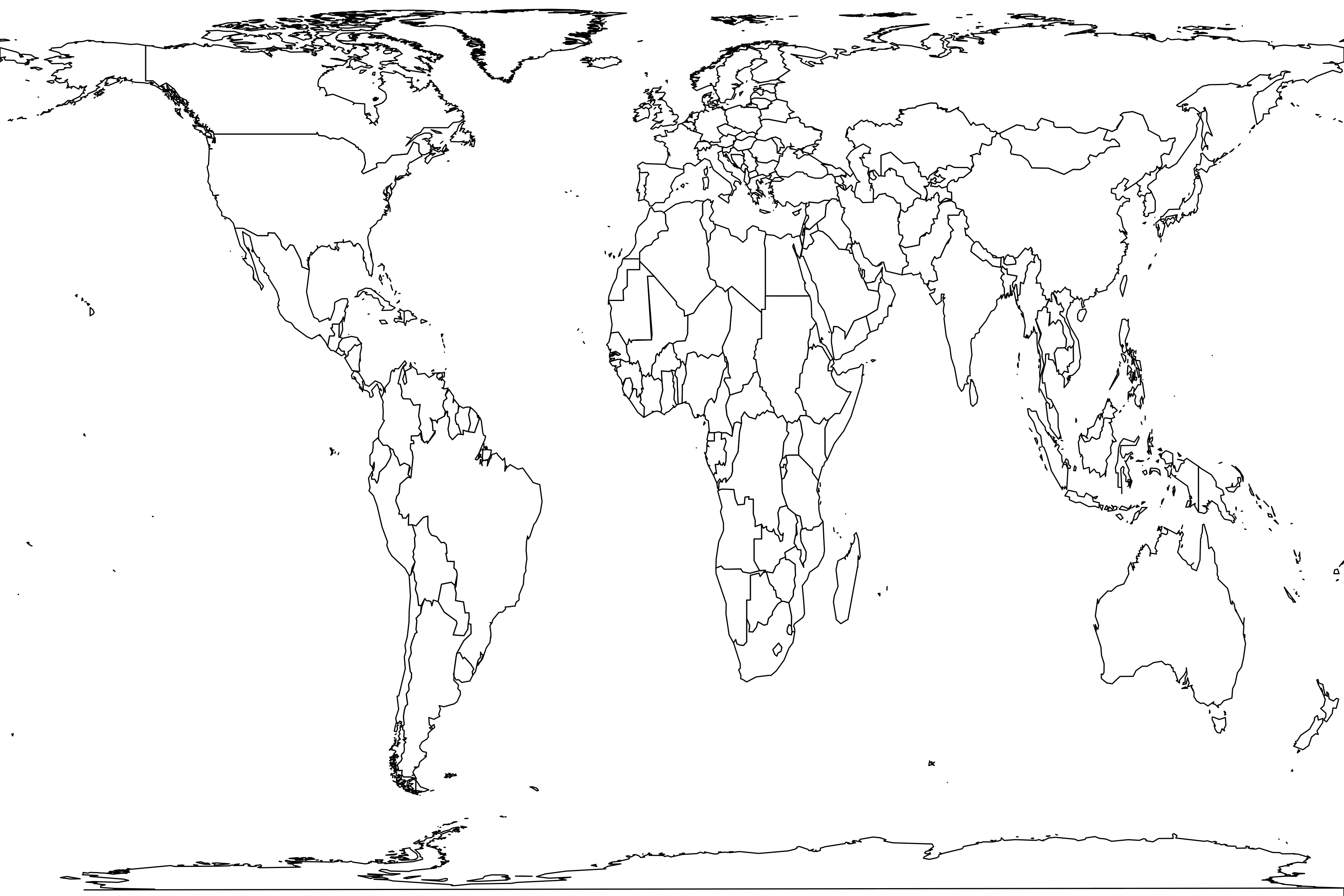Sertäo Veredas-Peruaçu mosaic
Basic information
Sample name: Sertäo Veredas-Peruaçu mosaic
Reference: G. B. Ferreira, B. Collen, T. Newbold, M. J. R. Oliveira, M. S. Pinheiro, F. F. de Pinho, M. Rowcliffe, and C. Carbone. 2020. Strict protected areas are essential for the conservation of larger and threatened mammals in a priority region of the Brazilian Cerrado. Biological Conservation 251:108762 [ER 3407]
Geography
Country: Brazil
State: Minas Gerais
Coordinate: 15° 0' S, 45° 0' W
Coordinate basis: estimated from map
Geography comments: "Sertäo Veredas-Peruaçu is a mosaic of protected areas located in northern Minas Gerais state, south-eastern Brazil which extends over approximately 18,000 km2"
Environment
Habitat: tropical/subtropical savanna
Altered habitat: combined
Protection: national/state park
Substrate: ground surface
Disturbance: fire suppression,agriculture,grazing,selective logging
MAT: 24.0
MAP: 1100.0
Dry months: 6
Habitat comments: "The Sertäo Veredas-Peruaçu mosaic (SVP) extends ... a transitional area between Cerrado – a tropical savanna ecosystem – and Caatinga – a complex of thorn scrub and seasonally dry forests associated with a semi-arid climate"
"Savannas dominate the landscape covering at least 50% of the region, while pasture and agriculture cover approximately 10%"
"The climate is markedly seasonal, with well-defined wet and dry seasons, each one lasting for roughly six months; mean annual rainfall ranges from 800 to 1,400 mm"
"The SVP is formed of 14 protected areas (PAs) – eight strict and six multiple-use PAs"
"We surveyed seven of SVP's PAs: four national/state parks, one Private Reserve and two large Environmental Protection Areas (APAs)"
In APAs, "human settlements and some degree of land conversion are allowed"
"The two APAs assessed in this study have at least 60% of their area covered with natural vegetation, with a low human population density distributed across scattered villages and one small town connected by unpaved roads"
Management intervention within the APAs are "mainly restricted to wildfire suppression during the dry season and localised actions to prevent illegal deforestation"
From supplement: "some areas of natural vegetation have been altered by anthropogenic uses, particularly grazing by cattle, collection of firewood, and charcoal production. Additionally, a small proportion of the area currently covered with natural vegetation has regenerated from a eucalyptus plantation, following the harvesting of non-native trees"
"Savannas dominate the landscape covering at least 50% of the region, while pasture and agriculture cover approximately 10%"
"The climate is markedly seasonal, with well-defined wet and dry seasons, each one lasting for roughly six months; mean annual rainfall ranges from 800 to 1,400 mm"
"The SVP is formed of 14 protected areas (PAs) – eight strict and six multiple-use PAs"
"We surveyed seven of SVP's PAs: four national/state parks, one Private Reserve and two large Environmental Protection Areas (APAs)"
In APAs, "human settlements and some degree of land conversion are allowed"
"The two APAs assessed in this study have at least 60% of their area covered with natural vegetation, with a low human population density distributed across scattered villages and one small town connected by unpaved roads"
Management intervention within the APAs are "mainly restricted to wildfire suppression during the dry season and localised actions to prevent illegal deforestation"
From supplement: "some areas of natural vegetation have been altered by anthropogenic uses, particularly grazing by cattle, collection of firewood, and charcoal production. Additionally, a small proportion of the area currently covered with natural vegetation has regenerated from a eucalyptus plantation, following the harvesting of non-native trees"
Methods
Life forms: carnivores,rodents,ungulates,other large mammals
Sampling methods: automatic cameras
Sample size: 2158 captures or sightings
Years: 2012 - 2017
Seasons: dry
Nets or traps: 517
Net or trap nights: 26367
Camera type: digital
Cameras paired: no
Trap spacing: 1.5
Sampling comments: "We adapted a standardized camera trapping protocol (TEAM Network, 2011) to survey the mammal community in 517 sampling sites distributed across nine arrays (five in strict PAs and four in APAs) – covering an area of approximately 1000 km2 and totalling 26,367 survey days between 2012 and 2017"
"The shortest distance between neighbouring arrays was 12 km (average: 24.7; range: 12–46)"
"Each camera trap array consisted of 43–70 sampling sites systematically distributed at intervals of 1.5 km"
"Cameras (Bushnell TrophyCam and Bushnell Aggressor) were always deployed in natural vegetation areas at least 200 m from smaller settlements or isolated houses"
"Each camera trap site was surveyed for no more than 74 days (average: 50.8) and only during the dry season (mid-April to mid-October)"
"Camera trap sensitivity was set to ‘normal’, a 30-second interval between sequential triggers was observed and no bait was used to attract animals"
"The shortest distance between neighbouring arrays was 12 km (average: 24.7; range: 12–46)"
"Each camera trap array consisted of 43–70 sampling sites systematically distributed at intervals of 1.5 km"
"Cameras (Bushnell TrophyCam and Bushnell Aggressor) were always deployed in natural vegetation areas at least 200 m from smaller settlements or isolated houses"
"Each camera trap site was surveyed for no more than 74 days (average: 50.8) and only during the dry season (mid-April to mid-October)"
"Camera trap sensitivity was set to ‘normal’, a 30-second interval between sequential triggers was observed and no bait was used to attract animals"
Metadata
Sample number: 3791
Contributor: Benjamin Carter
Enterer: Benjamin Carter
Created: 2021-06-10 13:15:54
Modified: 2021-06-13 23:50:32
Abundance distribution
27 species
1 singleton
total count 2158
geometric series index: 31.1
Fisher's α: 4.348
geometric series k: 0.7790
Hurlbert's PIE: 0.8707
Shannon's H: 2.5536
Good's u: 0.9995
Each square represents a species. Square sizes are proportional to counts.
• Find matching samples
Register


